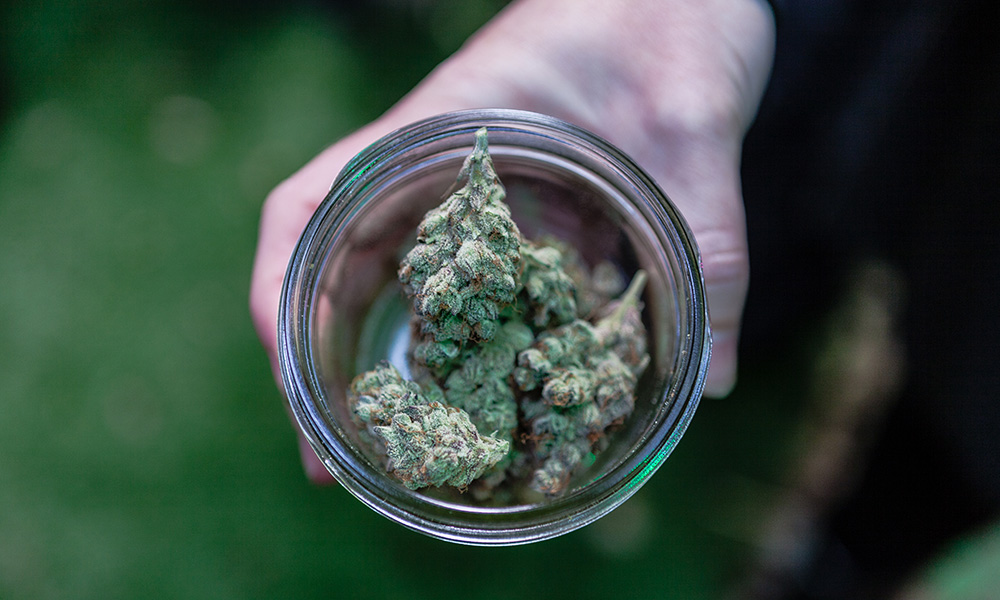
Medical
Study Finds Medical Marijuana Programs Service More Pain Patients Than Anything Else
Study shows chronic pain is the primary condition driving patients to medical cannabis.
Marijuana is used for medicinal purposes by millions of people all over the United States, but exactly for which ailments are permitted under these programs depends strictly on the laws established in each individual state. Of course, some of these arrangements are better than others.
Two decades ago, when California became the first state in the nation to put a medical marijuana law on the books, the system was so loose that patients with any condition from terminal cancer to insomnia could participate. But many lawmakers and other suits dedicated to the supposed order of civil society considered this liberal cannabis use a gateway to full-blown legalization, which made it more difficult to roll out similar schemes in other parts of the country.
But rather than admit defeat, cannabis advocates began pushing compassionate use strategies geared toward making medical marijuana available exclusively to seriously ill patients, leaving the average Janes and Joes with ailments classified as more uncomfortable than debilitating out of the picture entirely. Come to find out people suffering from pain conditions is what is needed to sustain most medical marijuana markets, a new study finds.
Researchers with the University of Michigan have found that without chronic pain as a qualified condition medical marijuana programs in parts of the country would struggle to survive. Their findings, which were published in the latest journal Health Affairs, show that “chronic pain” is the primary condition driving patients to try cannabis medicine. Other health conditions ranking among the most popular included spasms as a result of multiple sclerosis and nausea related to chemotherapy treatment.
At the core of this study, researchers admit that they really just wanted to get a better grip on whether patients were using medical marijuana for conditions in which there was scientific evidence showing effectiveness. Although marijuana is legal for a variety of ailments in 33 states, the efficacy of the herb for specific diseases can, at times, linger somewhere between shaky and non-existent.
Nevertheless, the study found that more than 85 percent of registered patients are using the herb to treat an “evidence-based condition.” Among this group, 62.2 percent of them used it for chronic pain.
These results should come as no surprise to those that have been following the medical marijuana timeline in the United States. California’s program, which has always allowed for pain conditions, was wildly successful before the state moved to legalize for recreational use, and restrictive programs, those allowing access for only a handful of ailments (New York comes to mind) have been pulled out of the gutter in recent years by just adding chronic pain to the mix.
Some of the latest moves to incorporate pain conditions into medical marijuana programs are happening in states like Illinois, which now allows patients to use medical marijuana as a substitute for prescription painkillers. This type of plans seems to be happening more ever since studies have surfaced pointing to medical marijuana as a way to reduce the opioid epidemic. Even though the research over whether marijuana can actually take the place of opioids is sparse, some of the more progressive states are willing to give it a try in an attempt to reduce overdose deaths.
Although the latest study did not dig into the research behind the effectiveness of cannabis as it pertains to certain conditions, “the majority of patients… are using cannabis for reasons where the science is the strongest,” lead study author Kevin Boehnke said in an interview with NBC News.
The point of reference for this study comes from a body of evidence published in 2017 from the National Academies of Sciences, Engineering and Medicine. This review is considered one of the most acceptable collections of evidence surrounding the cannabis plant, as it contains more than 10,000 separate analyses on the subject by some of the leading scientific minds in the country. So if the University of Michigan researchers found proof inside this collection showing medical marijuana was effective in treating a particular condition, they deemed it a legitimate claim. If it did not, or the evidence was limited, researchers discarded the condition as not being evidence-based.
All in all, only about 15 percent of patients are using medical marijuana for conditions where the evidence is weak or non-existent, the study shows. It is important to point out that researchers did not take into account those medical marijuana programs, like the one in California, where patients are not required to register in order to participate
The outcome of the study was mostly favorable for medical marijuana. Researchers concluded that the cannabis plant should be eliminated from its Schedule I classification on the DEA’s Controlled Substances Act, “but also that state and federal policymakers should begin evaluating evidence-based ways for safely integrating cannabis research and products into the health care system.”
TELL US, do you use cannabis for medical reasons?






















